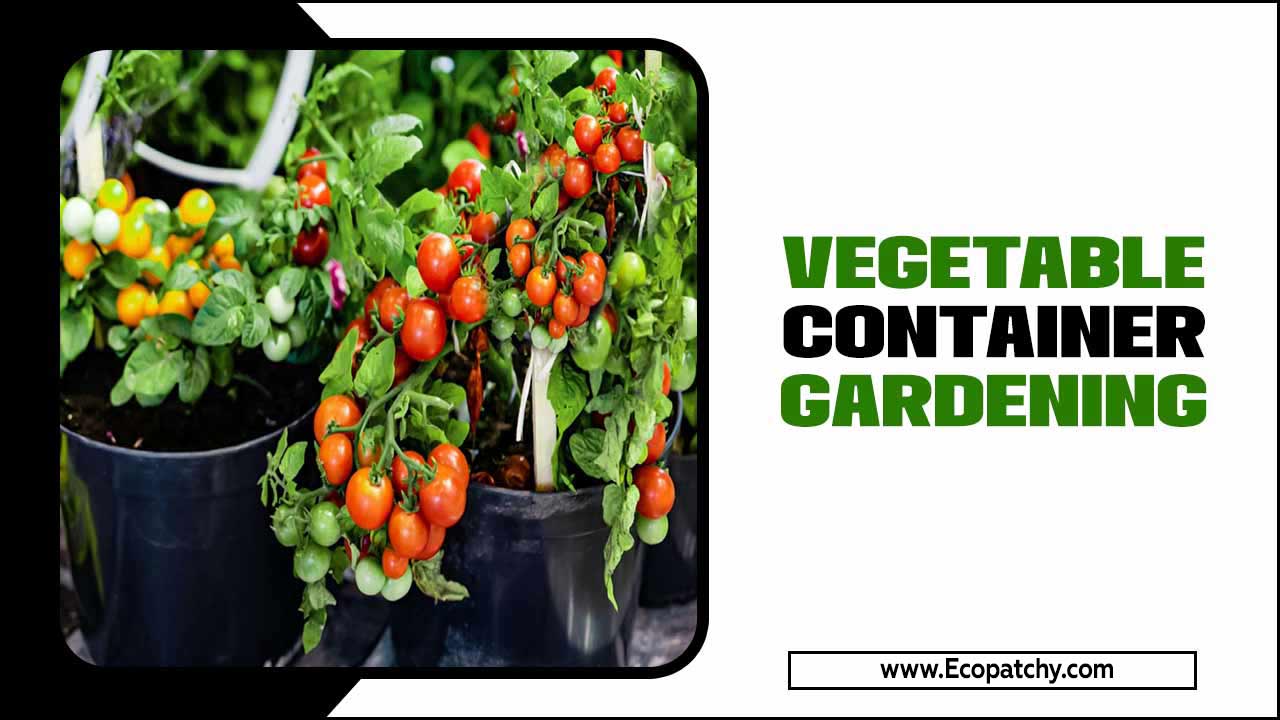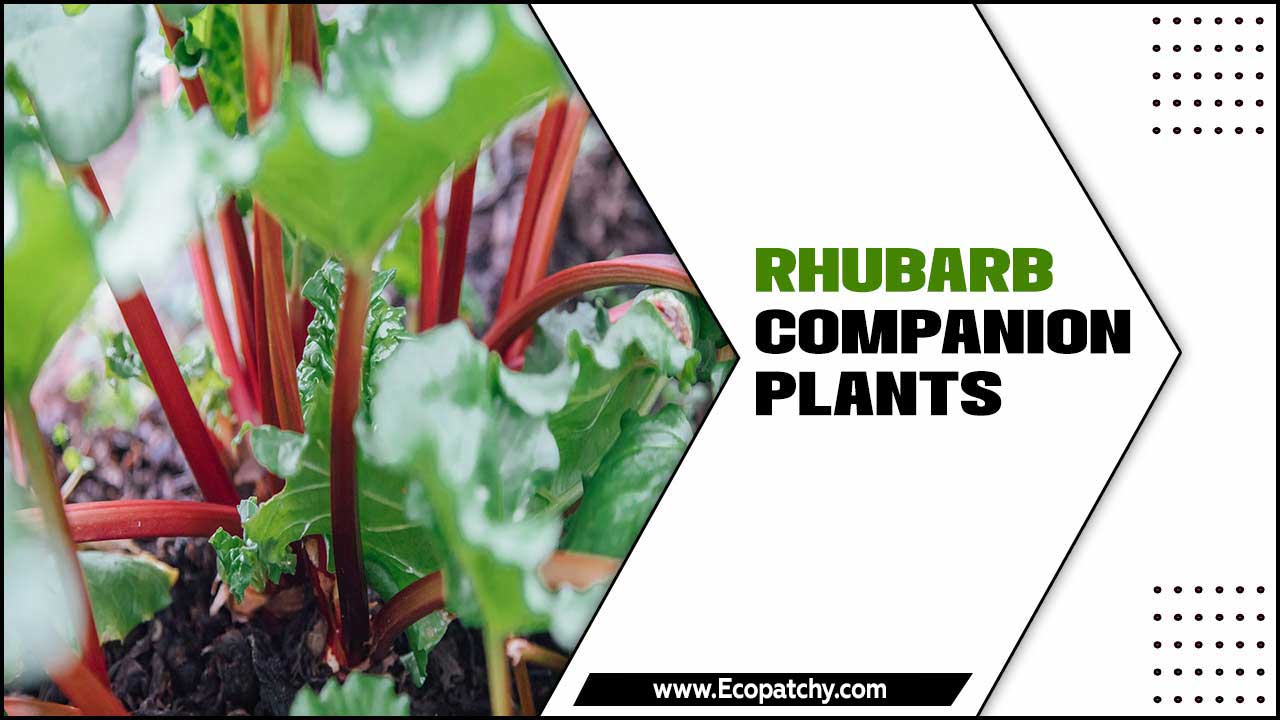Asparagus is a popular and versatile vegetable that is not only delicious but also packed with essential vitamins and minerals. While it may take a few years for an asparagus bed to become established, the reward of a bountiful harvest for many years to come makes it well worth the effort.
However, successful asparagus cultivation requires more than just planting and watering. Companion planting, the practice of strategically planting different crops next to each other for mutual benefit, can play a crucial role in the health and productivity of an asparagus bed.
By selecting the right companion plants, gardeners can improve soil quality, repel pests, and increase pollination, resulting in a more robust asparagus crop. Best companion plants for asparagus beds we will delve into the world of companion planting for asparagus beds and explore some of the best plant combinations to ensure a thriving and fruitful harvest.
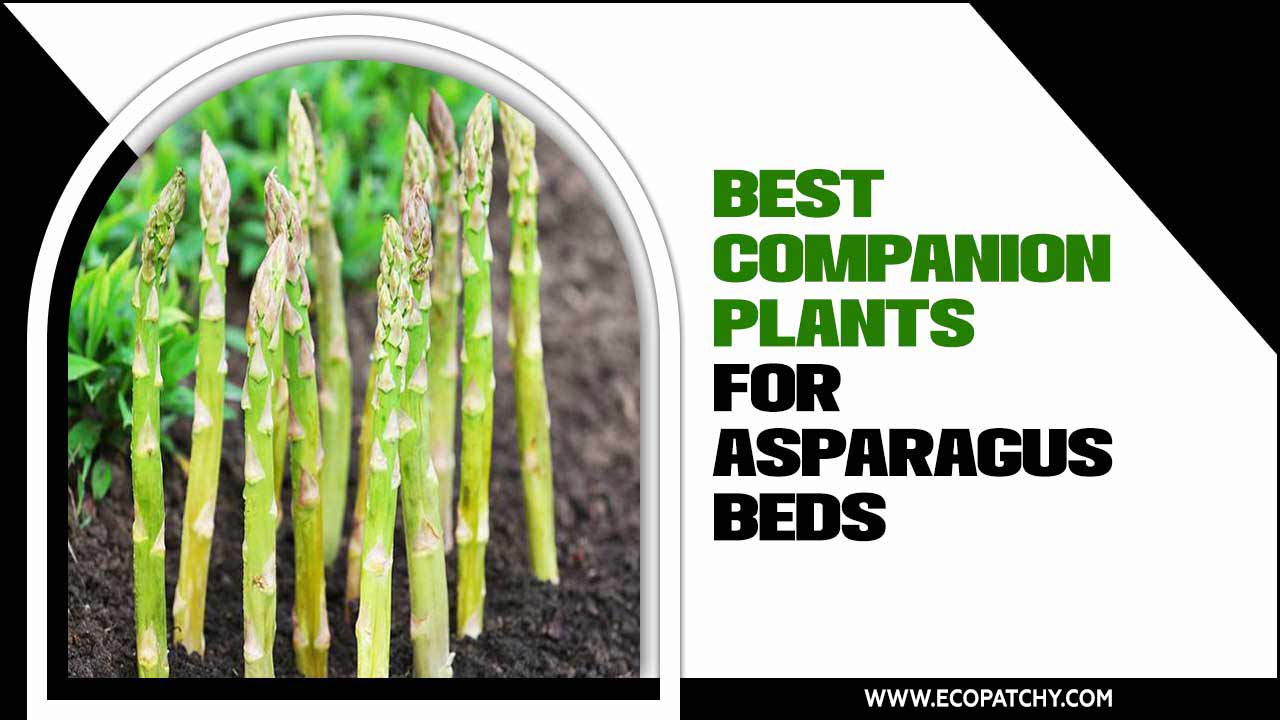
What Is Companion Planting?
Companion planting is a gardening technique that involves planting different crops together to benefit each other. In the case of asparagus beds, companion planting can help improve soil health, control pests, and increase overall yields. You can create a harmonious ecosystem where plants work together to thrive by choosing the right companion plants for your asparagus beds.
Some common companion plants for asparagus include tomatoes, basil, parsley, and marigolds. These plants can help deter pests like aphids and nematodes, attract beneficial insects like ladybugs and bees, and improve soil fertility. With the right combination of companion plants, you can maximize the productivity and health of your asparagus beds.
10 Best Companion Plants For Asparagus Beds
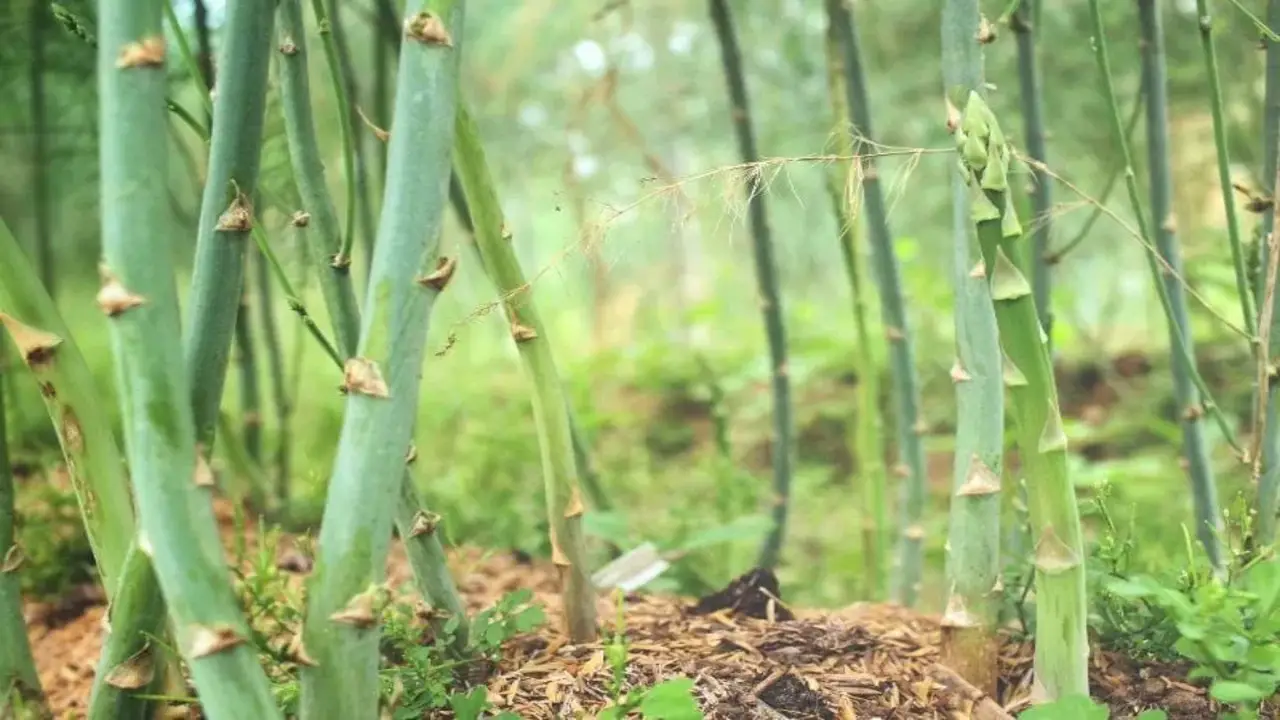
When it comes to growing asparagus, choosing the right companion plants can make a big difference in the health and productivity of your asparagus beds. Planting these companion plants alongside your asparagus can create a healthier and more productive growing environment for your favorite vegetable. Here are 10 of the best companion plants for asparagus beds:
Basil
Planting basil alongside asparagus can have multiple benefits. It acts as a natural repellent for aphids and attracts pollinators to the garden. The strong aroma of basil also helps mask the scent of asparagus plants, deterring pests.
Additionally, the lush foliage of basil provides shade for the asparagus roots, conserving moisture. The symbiotic relationship between basil and asparagus enhances the flavor of both plants. Regularly harvesting basil leaves also helps maintain airflow around the asparagus spears, preventing disease. Basil is indeed one of the best companion plants for asparagus beds.
Cilantro
Companion planting cilantro with asparagus can deter harmful pests. By attracting beneficial insects like parasitic wasps, cilantro helps control asparagus pests naturally. Additionally, the nectar-rich cilantro flowers benefit the entire garden by attracting pollinators. Cilantro’s deep root system improves soil structure and helps prevent erosion. Moreover, its distinct aroma can help mask the scent of asparagus from pests, providing extra protection. With its numerous benefits, cilantro is a valuable addition to any asparagus garden.
Comfrey
Comfrey, a perennial plant, is a fantastic companion for asparagus. Its deep taproots absorb many nutrients from the soil, benefiting neighboring asparagus plants. You can improve soil fertility and water retention by intercropping comfrey with asparagus.
The large leaves of comfrey provide shade and act as a natural mulch, conserving moisture for the asparagus beds. Additionally, comfrey promotes vigorous growth in asparagus plants thanks to its high nitrogen content. To nourish asparagus roots, consider regularly cutting back comfrey leaves and using them as mulch.
Dill
Companion planting dill with asparagus attracts beneficial insects like ladybugs and lacewings, creating a symbiotic relationship between the plants. Dill’s delicate flowers offer ample nectar for pollinators, boosting the overall yield of the asparagus bed.
Additionally, the strong scent of dill can confuse and deter pests, protecting the asparagus plants from damage. The feathery dill foliage acts as a natural mulch, conserving moisture in the asparagus bed during the growing season. Harvesting dill leaves provides a flavorful herb and complements the taste of asparagus in meals.
Grapes
Planting grapes near asparagus beds offers several benefits. The sprawling vine of grapes acts as a natural trellis, allowing the asparagus spears to climb. The dense foliage of grapevines provides shade, reducing water evaporation and protecting delicate asparagus crops from wind. Additionally, the roots of grapes help improve soil drainage by breaking up compacted soil.
This symbiotic relationship between grapes and asparagus creates a visually stunning and productive garden. You can enhance the growing season by intercropping grapes with asparagus while adding beauty to your asparagus patch.
Nasturtium
Nasturtium is an excellent companion plant for asparagus beds. Its vibrant flowers attract pollinators, benefiting not only asparagus but also other nearby plants. Additionally, the aromatic leaves of nasturtium repel pests like aphids and cucumber beetles, protecting the asparagus from potential damage.
The trailing vines of nasturtium can also act as living ground cover, effectively suppressing weeds in the asparagus beds. Moreover, companion planting of nasturtium with asparagus adds color and visual interest to the garden. Lastly, harvesting nasturtium flowers and leaves provides a peppery flavor that complements asparagus dishes well.
Nightshades
Companion planting nightshades family plants like tomatoes and peppers with asparagus enhances flavor, thanks to the natural chemicals they produce. These chemicals also deter pests and protect asparagus from solanine and nematodes. Nightshade plants offer vertical structure and support for climbing asparagus spears, efficiently using garden space. Their diverse root systems improve soil health. Planting aster family members, such as tomatoes and peppers, alongside asparagus is a good idea. They are heavy feeders like asparagus and provide a symbiotic relationship.
Parsley
Companion planting parsley with asparagus attracts beneficial insects like hoverflies and parasitoid wasps. Its deep root system breaks up compacted soil, benefiting asparagus growth. The dense foliage provides shade and conserves moisture for asparagus roots. Harvesting parsley leaves offers a nutritious garnish for asparagus dishes. Additionally, the strong aroma of parsley helps mask the scent of asparagus from pests. Incorporating parsley into your asparagus garden creates a symbiotic relationship that benefits both plants.
Petunias
Planting petunias near asparagus beds enhances the garden with vibrant colors and visual appeal. These flowers attract pollinators, benefiting the asparagus plants’ fruit set and yield. The trailing habit of petunias acts as living ground cover, suppressing weeds around the asparagus patch.
Furthermore, the dense foliage of petunias provides shade and conserves moisture for the asparagus roots. By companion planting petunias with asparagus, you create a beautiful and functional garden space that benefits both plants.
Strawberries
Strawberries are excellent companions for asparagus beds due to their low-growing habit. They help suppress weed growth and conserve moisture in the soil. The dense foliage of strawberries provides shade, keeping the soil cool and retaining moisture.
Additionally, strawberries attract pollinators, benefiting both the strawberries and asparagus plants. As you wait for your asparagus to mature, you can enjoy the sweet fruits of strawberries. Their symbiotic relationship with asparagus makes them one of the best companion plants for your asparagus garden.
Tips For Planting The Best Companion Plants For Your Asparagus Beds
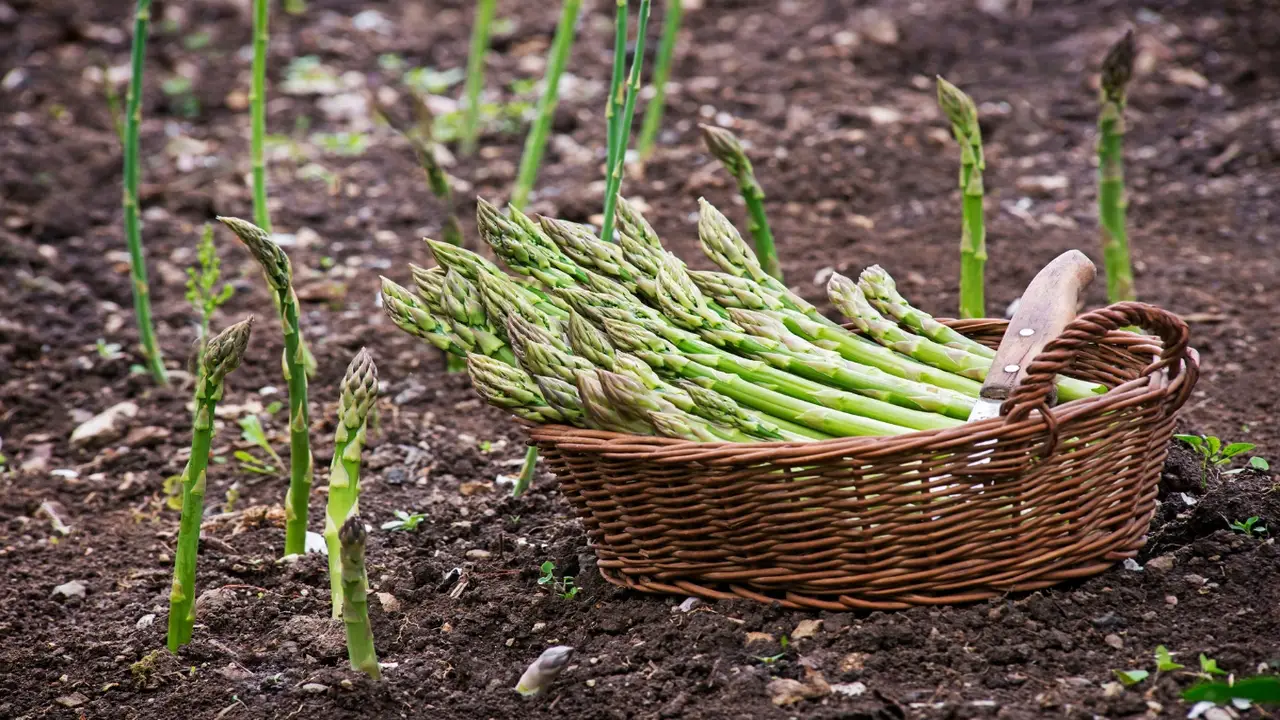
When planting asparagus beds, it is important to consider companion plants that can help enhance the growth and health of your crop. Companion planting involves pairing certain plants together that mutually benefit each other. Here are some tips for selecting the best companion plants for your asparagus beds:
- Choose Nitrogen-Fixing Plants: Asparagus is a heavy feeder that requires a lot of nitrogen. Planting nitrogen-fixing plants, such as legumes like beans or peas, near your asparagus beds can help replenish the soil with this essential nutrient.
- Avoid Competing Plants: Asparagus has an extensive root system that other aggressive plants can easily crowd out. Avoid planting vegetables or herbs with deep root systems, such as tomatoes or mint, near your asparagus beds to prevent competition for water and nutrients.
- Attract Beneficial Insects: Planting flowers or herbs that attract beneficial insects, such as ladybugs or lacewings, near your asparagus beds can help control pests naturally and promote a healthy ecosystem in your garden.
- Provide Shade And Wind Protection: Asparagus prefers partial shade and is sensitive to strong winds. Consider planting taller companion plants, like sunflowers or corn, on the windward side of your asparagus beds to provide shade and create a windbreak.
You can create a harmonious growing environment that promotes healthy growth and abundant harvests by selecting the right companion plants for your asparagus beds.
Benefits Of Companion Planting With Asparagus
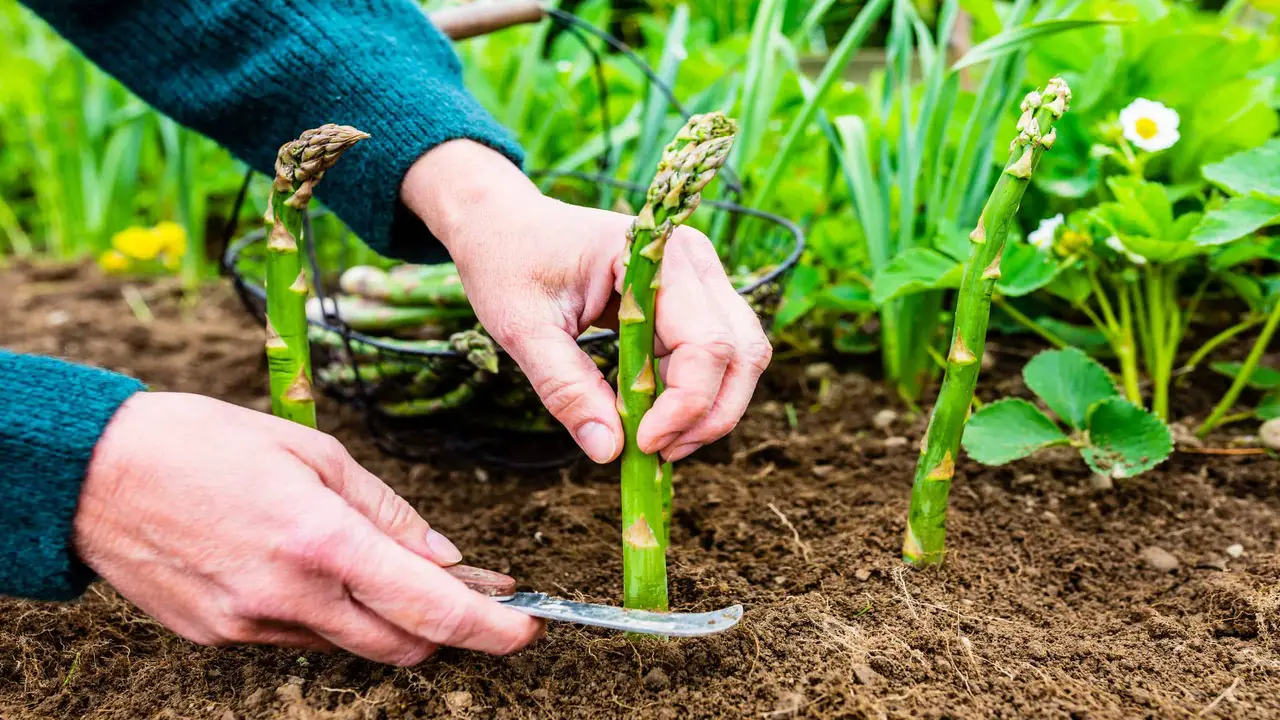
Companion planting with asparagus can offer numerous benefits to your garden. By strategically planting certain companion plants alongside your asparagus beds, you can help deter pests, improve soil quality, and enhance the overall health of your plants.
For example, planting tomatoes near your asparagus can help repel asparagus beetles, while marigolds can deter nematodes and other harmful insects. Additionally, planting nitrogen-fixing legumes such as clover or peas can help enrich the soil with this essential nutrient, which is beneficial for the growth of asparagus. Companion planting with asparagus can create a harmonious and thriving garden ecosystem.
Conclusion
Companion planting can greatly benefit your asparagus beds by improving soil fertility, attracting beneficial insects, and deterring pests. By strategically planting companion plants, you can create a harmonious and productive ecosystem in your garden. Some of the best companion plants for asparagus beds include basil, cilantro, comfrey, dill, grapes, nasturtium, nightshades, parsley, petunias, and strawberries.
These plants provide various benefits, such as repelling pests, enhancing soil nutrients, and improving pollination. When planting companions for your asparagus, consider factors like sunlight, spacing, and compatibility between plants. By practising companion planting, you can maximize the health and productivity of your asparagus beds while promoting a diverse and thriving garden ecosystem.
Frequently Asked Questions
1.What Should You Not Plant Near Asparagus?
Ans: Plants that attract asparagus beetles, like carrots, parsley, and celery, should be avoided near asparagus beds. Additionally, members of the allium family (onions, garlic) should not be planted nearby. Keep tomatoes and potatoes away as they are prone to similar diseases. Deep-rooted plants such as sunflowers or dill should also be avoided.
2.What Can I Put On My Asparagus Bed?
Ans: Some great companion plants for asparagus beds include parsley, basil, and tomatoes. You can also benefit from planting clover or vetch, as they fix nitrogen in the soil. However, avoid planting nightshade family members like peppers or eggplants near your asparagus beds. Mulching with straw or leaves can also help retain moisture and suppress weeds around the bed.
3.What Plants Grow Well Next To Asparagus?
Ans: Some plants that thrive alongside asparagus include tomatoes, parsley, and basil. Marigolds, nasturtiums, and calendula also make excellent companions. These plant pairings can improve soil health and deter pests. However, it is best to avoid planting onions, garlic, or other alliums near asparagus as they may hinder growth.
4.What Do I Add To Soil When Planting Asparagus?
Ans: To ensure healthy growth of asparagus, add compost or aged manure to the soil before planting. Aim for a pH level between 6.0 and 7.5 for optimal results. Additionally, consider adding bone meal or rock phosphate for phosphorus, but avoid nitrogen-rich fertilizers that can encourage foliage growth instead of root development.
5.What Are The Best Companion Plants For Asparagus?
Ans: Some excellent companion plants for asparagus beds include tomatoes, parsley, basil, and marigolds. Tomatoes repel asparagus beetles, while parsley and basil attract beneficial insects. Marigolds have natural pest-repelling properties that benefit the asparagus bed. Avoid planting companions with extensive root systems or high water requirements to prevent nutrient competition.

